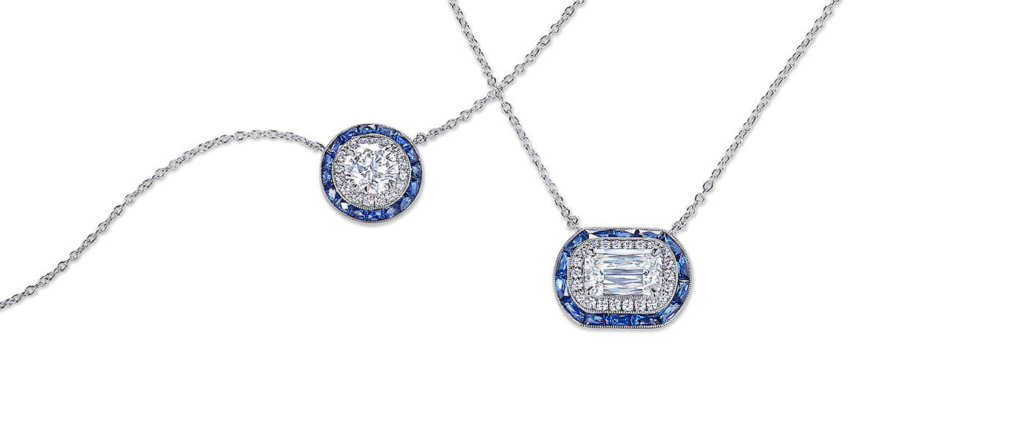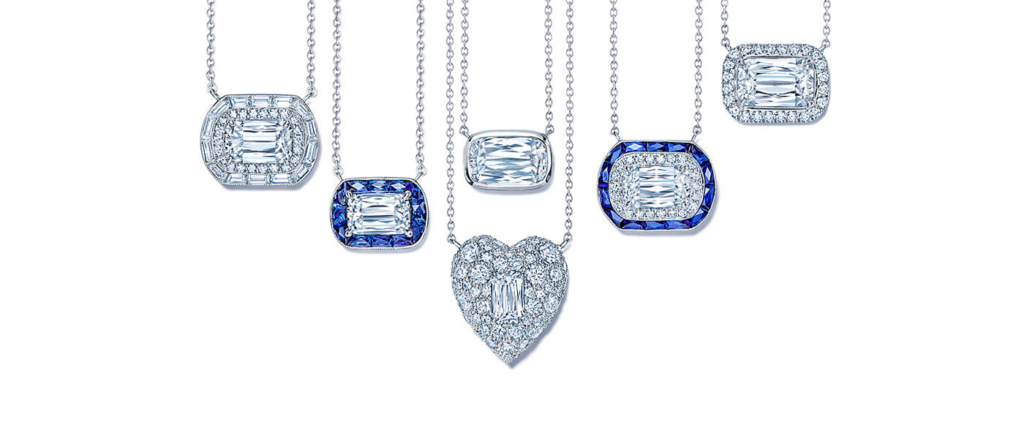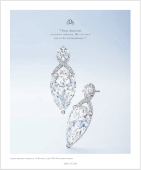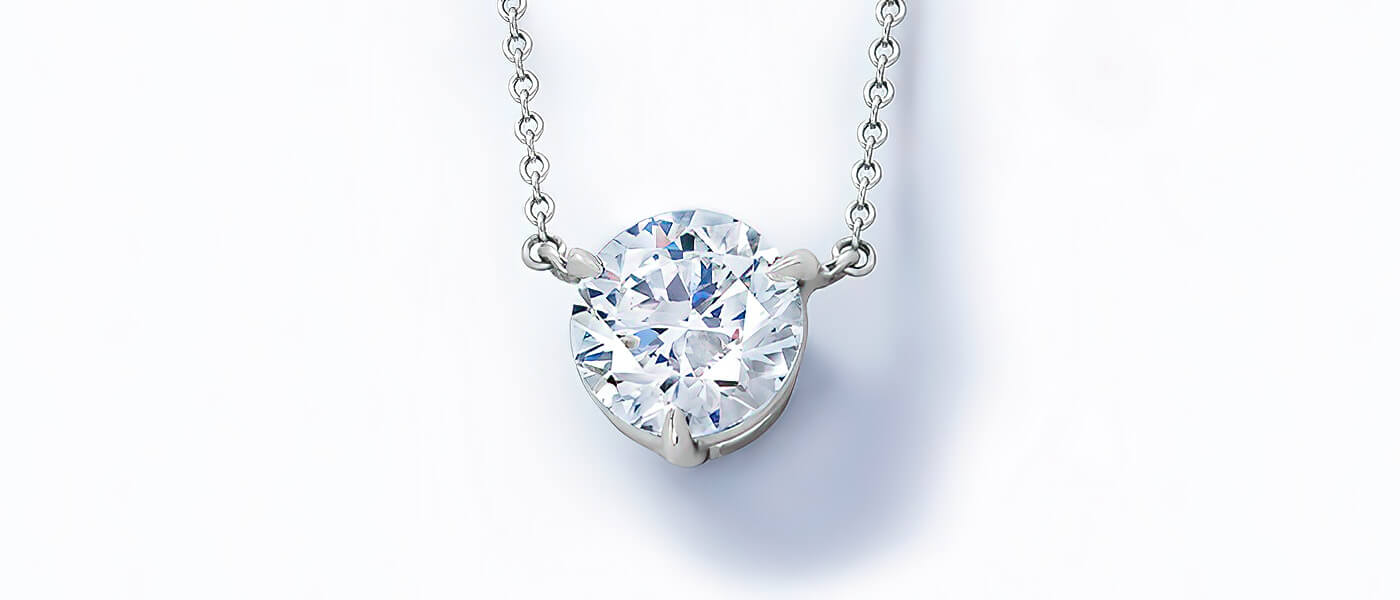A solitaire diamond pendant radiates style and sophistication. With its timeless, effortless design, this piece deserves a place in every jewelry collection. This versatile classic can be worn just about anywhere and can be dressed up for special occasions. Whether you are elegant, minimalist, sporty, or somewhere in between, a diamond solitaire pendant can fit into any style and can be worn at any age.
Kwiat offers single diamond pendants in an array of shapes, settings, and precious metal types to suit your personality, like traditional yellow gold and elegant platinum. It can be worn alone to exude chic, understated chic or paired with other delicate jewelry to elevate your look. If you’re considering a solitaire diamond pendant, either as a gift or for yourself, you may not know where to begin. Despite its classic design, there are so many ways to vary the style of a diamond pendant to make it uniquely yours. With this guide, we hope to assist you in finding your perfect diamond solitaire pendant.
Solitaire Diamond Pendant Style
DIAMOND SHAPES
The shape of your diamond will greatly influence the style of your diamond solitaire pendant. The most popular diamond shapes:
- Round diamonds are a traditional and highly brilliant choice. We use a proprietary diamond cutting technique called the Kwiat Tiara® Cut to maximize size and brilliance. Unlike other round diamond pendant necklaces, the faceting of our Kwiat Tiara® Cut gives the diamond a more vibrant sparkle.
- Pear diamonds have a beautiful shape that’s unique and feminine. Their graceful silhouettes are sure to catch attention.
- Oval-cut diamonds are a unique take on a classic, with a brilliance comparable to round diamonds. They are especially suited to east-west solitaire pendants.
- With their elongated, eye-catching shape, marquise diamonds have the largest face-up area — 15% more than rounds.
- ASHOKA® diamonds have an elongated shape and are cut with 62 facets to create an exceptional radiance. A solitaire pendant showcases the beauty of this modern and sophisticated diamond.
- Developed in the eighteenth century, the cushion cut is a romantic, pillow-shaped stone. We have refined the cushion with an elegant, elongated silhouette, perfect outline, beveled edges, and rounded corners. The Kwiat Cushion™ is an exquisite choice for a solitaire pendant.
DIAMOND SOLITAIRE PENDANT SETTINGS
A solitaire pendant looks lovely in a prong setting, bezel setting, or halo setting.

- Diamond pendant necklaces set in prongs are a classic option and are probably what come to mind when you think of solitaire diamond pendants. A prong setting holds your diamond securely in place, while also allowing maximum light to be reflected from every angle, enhancing your diamond’s brilliance. Kwiat uses minimal metal in solitaire pendants to create the airy illusion that the diamonds are “floating” against the skin.
- In a bezel setting, your diamond is circled by a ring of precious metal. A bezel setting offers excellent protection for your diamond from bumps and drops, as well as a timeless yet contemporary look.
- Halo settings hold your diamond in the center of a metal ring set with accent diamonds. The halo setting enhances the brilliance of your diamond solitaire pendant and is an excellent choice if you are looking for a pendant with a bit more shimmer. This setting also gives the illusion of a larger diamond.
PRECIOUS METAL SELECTIONS
A diamond solitaire pendant comes in four precious metal options: yellow gold, white gold, rose gold, and platinum. For diamond pendants, people often choose precious metals they wear most frequently.

Yellow gold is a classic precious metal that has resurged in popularity. If you love classics with a twist, consider our sunburst diamond pendant necklace in yellow gold.
Rose gold is a romantic color that is vintage-inspired and very popular at the moment. Rose gold is fairly versatile style-wise and compliments many skin tones.
Platinum and white gold have a very similar look. Both appear sleek, elevated, and modern. Platinum is more durable than white gold, plus it’s more valuable.
How to Choose a Diamond Solitaire
Once you have chosen the shape, setting, and metal you love best for your diamond solitaire pendant, you can choose a diamond. You will want to consider the 4Cs — the factors that determine a diamond’s beauty, rarity, and value. Nature determines the first three elements, but the diamond’s cut is determined by the master jewelers at Kwiat.
CUT
The cut of a diamond is the most important characteristic. A poorly cut stone will appear dull regardless of its color or clarity grade, whereas a well-cut stone will demonstrate a sparkling radiance.
COLOR
A diamond’s color refers to the presence of yellow within. Diamonds form underground as nitrogen molecules enter the carbon structure, giving them a yellowish color. According to the GIA color scale, color starts at D, representing Colorless, and goes through the letter Z, representing light yellow. Kwiat only selects diamonds that are colorless or nearly colorless.
CLARITY
Diamond clarity refers to the number of inclusions, if any, within the stone. Natural inclusions occur in almost all diamonds. Diamonds are graded on the GIA clarity scale from Flawless to Included (heavy inclusions). We only allow diamonds to pass our strict standards if they appear visually clean.
CARAT
Diamond carat weight is one of the easiest to understand and is mostly objective. Essentially, it refers to the weight of a diamond in carats, the scale used to measure gemstones.



